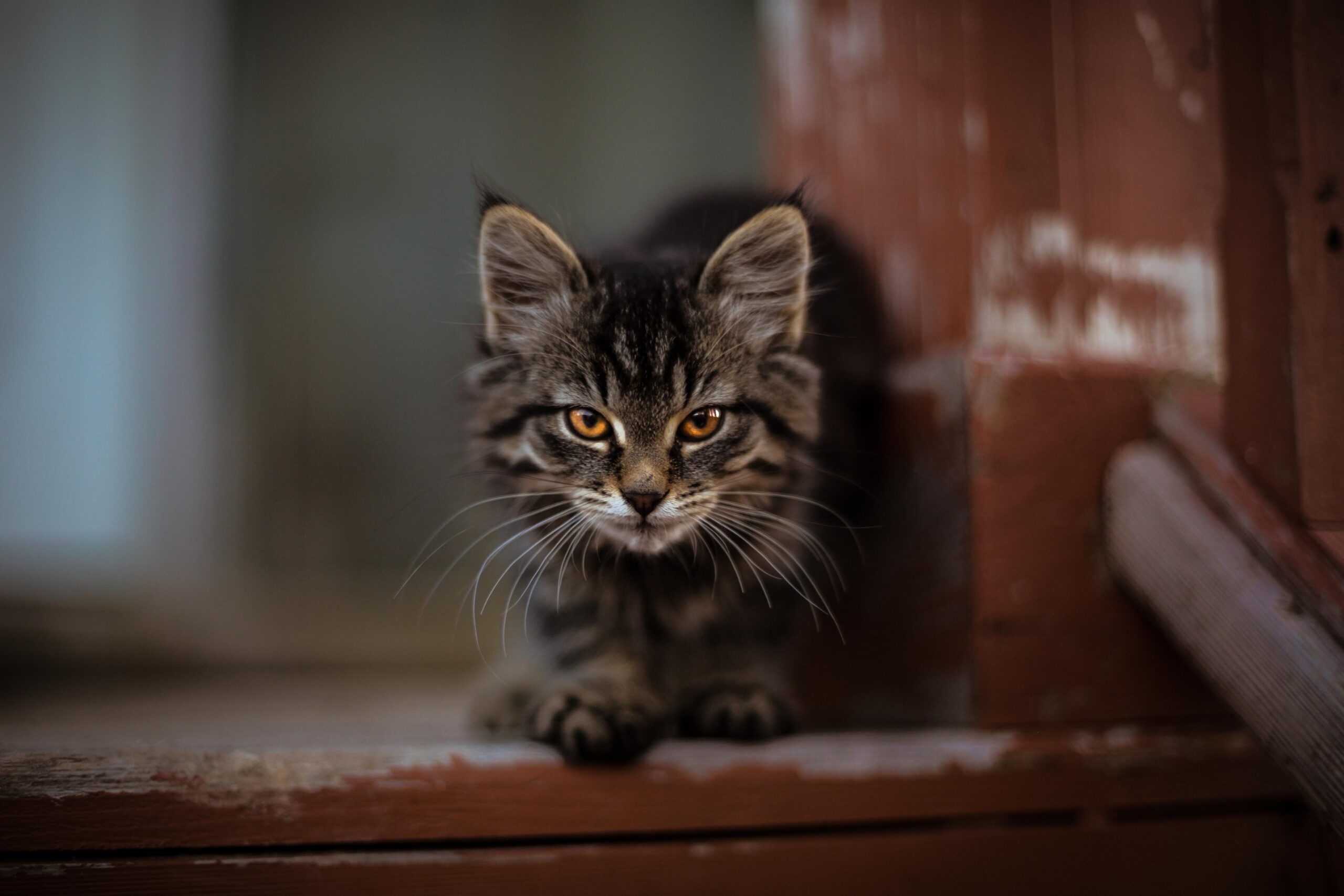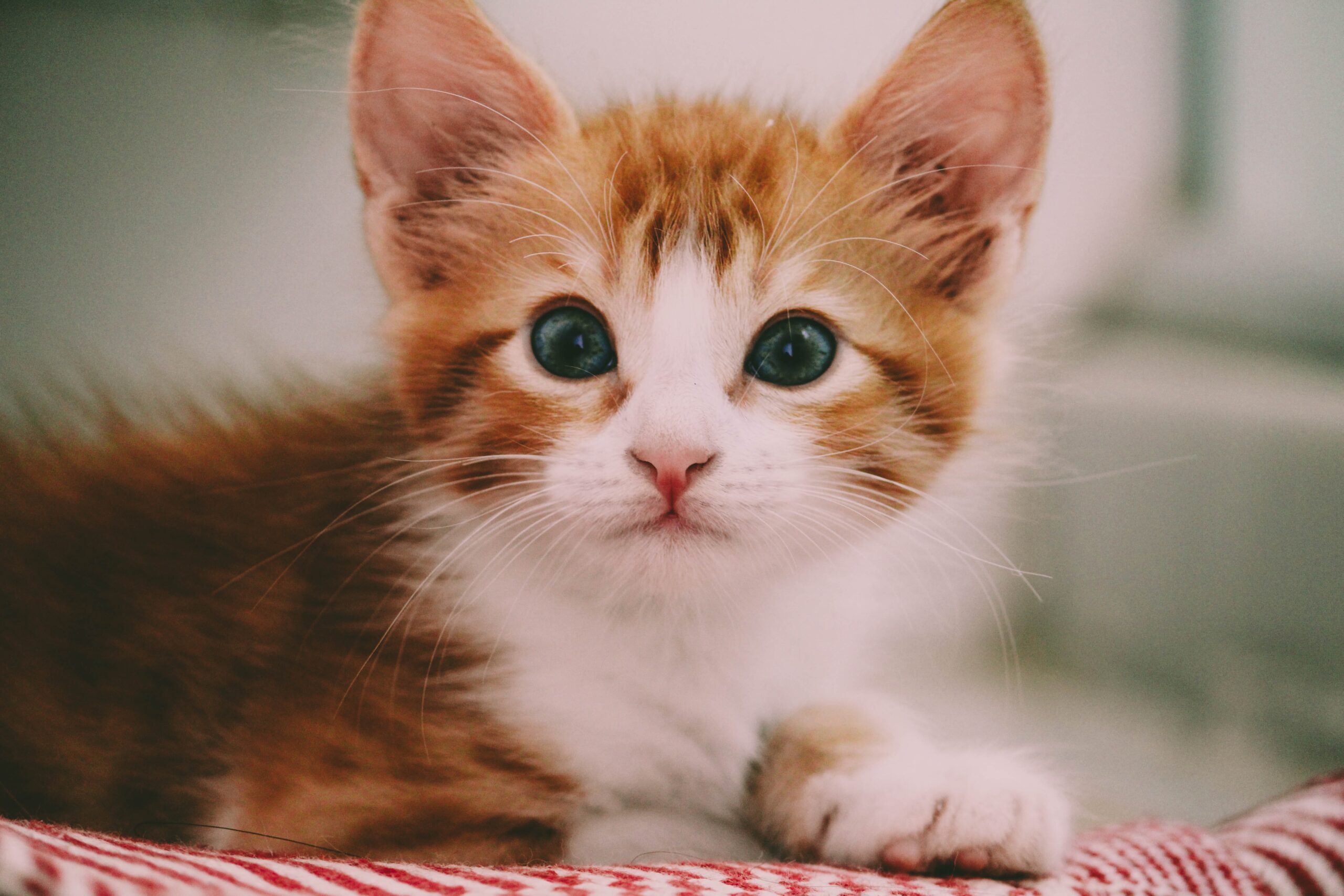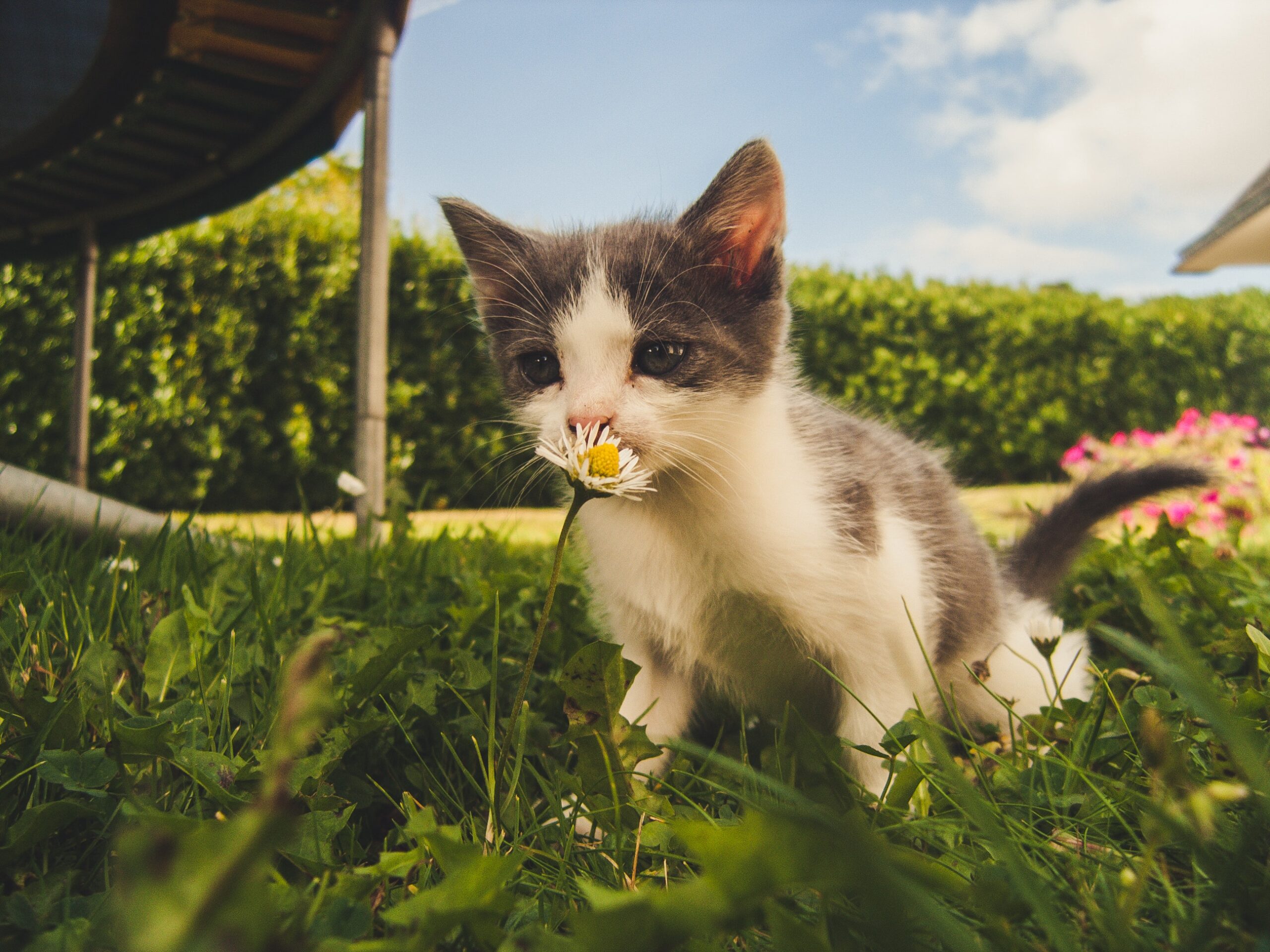Cats have long been regarded as enigmatic creatures with a wide range of behaviors that often leave their human companions puzzled. From their mysterious meows to their unpredictable antics, cats possess a complex nature that can be both fascinating and perplexing. Understanding the intricacies of cat behavior is crucial for cat owners, as it not only helps in providing a nurturing environment but also strengthens the bond between human and feline.
As responsible cat owners, it is essential to delve into the world of cat behavior to ensure the well-being and happiness of our furry companions. By gaining insights into their behaviors, we can decipher their needs, communicate effectively, and address any behavioral issues that may arise. Understanding why cats exhibit certain behaviors enables us to provide appropriate stimulation, enrichment, and care, fostering a harmonious relationship between humans and cats.
In this article, we will embark on a journey to decode the quirks and habits of our feline friends. We will explore various aspects of cat behavior, ranging from instinctual behaviors to social interactions, sleep patterns, unique sensory abilities, and problem behaviors. Additionally, we will discuss the importance of environmental enrichment, deciphering cat body language, and building trust and bonding with our cats. By the end of this article, readers will have a deeper understanding of their cats’ behavior, allowing them to provide the love, care, and support that their feline companions need and deserve.
Instinctual Behavior
Hunting and Prey Drive
Cats possess a natural instinct for hunting, driven by their innate desire to stalk, chase, and capture prey. They exhibit behaviors such as pouncing, stalking, and play fighting. To satisfy their predatory instincts, interactive toys and engaging play sessions can be provided.
Territory Marking and Scratching
Cats have a strong need to establish and mark their territory. Scratching serves various purposes for them, including scent marking, stretching, and nail maintenance. Redirecting this behavior to appropriate scratching posts and discouraging destructive scratching on furniture can be beneficial.
Grooming and Self-Care Routines
Cats are known for their meticulous grooming habits. Grooming helps them maintain hygiene, regulate body temperature, and foster social bonding. Licking, paw cleaning, and fur maintenance are common grooming behaviors. Monitoring their grooming rituals allows us to identify any abnormalities or signs of discomfort requiring veterinary attention.
Understanding the instinctual behaviors of cats enables us to meet their innate needs. By addressing their hunting instincts, providing suitable scratching options, and supporting their grooming routines, we can create an environment that fulfills their natural behavioral requirements.
Social Behavior
Communication Methods (Vocalizations, Body Language)
Cats communicate with humans and other animals using vocalizations and body language. They express their needs, emotions, and desires through meowing, purring, hissing, chirping, as well as through various body language cues like tail positions, ear movements, and facial expressions.
Social Hierarchy and Pecking Order
Cats have social structures within their groups, establishing hierarchies and pecking orders. This applies to multi-cat households and feral cat colonies. Understanding these dynamics helps us manage relationships between cats and create a harmonious environment when introducing new cats.
Play Behavior and Its Significance
Play is crucial for a cat’s social behavior. It helps them develop hunting skills, exercise, and bond with human companions. Cats engage in solitary play, interactive play with humans, and social play with other cats. Recognizing the significance of play allows us to provide mental and physical stimulation and strengthen our bond with our cats.
Understanding the social behavior of cats enables effective communication and meeting their social needs. Interpreting their vocalizations and body language helps us respond appropriately to their cues. Recognizing social hierarchies and promoting positive play interactions creates an environment that enhances the well-being and social fulfillment of our feline companions.
Sleep Patterns and Catnaps
Exploring the Sleep-Wake Cycle of Cats
Cats have unique sleep patterns that differ from humans. They experience alternating periods of light sleep, deep sleep, and brief wakeful moments. Understanding their sleep-wake cycle helps us recognize when cats require rest and provide them with a quiet and comfortable space for uninterrupted sleep.
The Role of Sleep in a Cat’s Overall Well-Being
Sleep is essential for a cat’s physical and mental health. It influences their growth, immune system, and cognitive functions. Various factors, such as age, activity level, and environment, can affect their sleep patterns. By prioritizing their sleep needs and creating a suitable sleep environment, we support their well-being.
Common Sleeping Positions and Locations
Cats have preferred sleeping positions and locations. They may curl up, stretch out, or adopt other postures while sleeping. Their favorite sleeping spots include cozy beds, sunny windowsills, high perches, or hidden nooks. Understanding their preferences helps us provide comfortable and safe resting areas tailored to their needs.
Understanding cat sleep patterns and preferences ensures they receive the rest they require. By providing suitable sleeping environments, we promote their physical and mental well-being. Recognizing the significance of sleep in their lives allows us to respect their restful moments and create a serene atmosphere that supports their natural sleep patterns.
Unique Sensory Abilities
Superior Hearing and the Detection of High-Frequency Sounds
Cats possess remarkable hearing abilities that exceed those of humans. They can detect a wide range of frequencies, and their ears are designed to capture and amplify sounds. Their acute hearing is crucial for hunting, communication, and sensory perception.
The Remarkable Sense of Smell and Its Influence on Behavior
Cats have a highly developed sense of smell that plays a vital role in their daily lives. Their olfactory system allows them to detect various scents and influences their behavior, including marking territory, recognizing individuals, and sensing potential threats.
Night Vision and Adaptation to Low-Light Environments
Cats are known for their ability to see in low-light conditions due to their specialized eyes. Adaptations like a higher number of rod cells and a reflective layer called the tapetum lucidum enhance their night vision. This exceptional ability aids their hunting skills and helps them navigate in dimly lit environments.
Understanding cats’ unique sensory abilities helps us appreciate their perspective and adapt their environments accordingly. Creating a quiet atmosphere respects their superior hearing, while considering their sense of smell allows us to provide engaging scents or avoid overwhelming odors. Providing appropriate lighting accommodates their night vision and ensures their safety. Embracing and catering to their sensory experiences enhances their well-being and enriches their lives.
Problem Behaviors and Solutions
Common Behavioral Issues (Scratching Furniture, Litter Box Problems)
Cats may display problem behaviors that can pose challenges for their owners. Examples include scratching furniture, inappropriate elimination, aggression, and excessive meowing. By understanding the root causes of these behaviors, we can find effective solutions to address them.
Understanding the Root Causes of Problem Behaviors
Identifying the underlying factors contributing to problem behaviors in cats is crucial. These may include stress, lack of environmental enrichment, medical conditions, changes in routine, or inadequate socialization. By understanding these root causes, we can implement targeted strategies to effectively address the behavior issues.
Effective Strategies for Addressing and Modifying Unwanted Behaviors
To address and modify problem behaviors in cats, there are several effective strategies that cat owners can implement. These strategies include:
- Providing suitable scratching surfaces: Cats have a natural instinct to scratch, and providing them with appropriate scratching surfaces, such as scratching posts or pads, can redirect their behavior away from furniture and other undesired objects.
- Utilizing positive reinforcement training: Rewarding desired behaviors with treats, praise, or playtime can encourage cats to repeat those behaviors. Positive reinforcement training can be used to reinforce good behavior and discourage unwanted actions.
- Establishing consistent routines: Cats thrive on routine, and having consistent feeding times, play sessions, and litter box maintenance can help reduce stress and provide a sense of security for your cat. Predictability and structure can contribute to improved behavior.
- Employing environmental enrichment techniques: Cats need mental and physical stimulation to prevent boredom and unwanted behaviors. Providing toys, puzzle feeders, and interactive playtime can keep them engaged and satisfied, reducing the likelihood of problematic behaviors.
- Seeking guidance from professionals: If problem behaviors persist or are particularly challenging, consulting with a veterinarian or animal behaviorist can be beneficial. They can provide expert advice, behavior modification plans, or recommend further interventions to address the underlying causes.
By implementing these strategies, cat owners can effectively manage and redirect unwanted behaviors in their feline companions. It is important to understand that patience, consistency, and positive reinforcement are key when modifying behaviors. Creating a harmonious living environment for cats and their owners is possible by addressing problem behaviors, understanding their root causes, and utilizing effective strategies to foster a positive and rewarding relationship.
Environmental Enrichment
The Significance of a Stimulating Environment for Cats
Creating a stimulating environment is essential for cats, as it satisfies their curiosity and intelligence. An enriched environment promotes their well-being by preventing boredom and reducing stress.
Providing Mental and Physical Stimulation through Toys and Activities
To stimulate your cat, offer interactive toys that engage their hunting instincts and encourage problem-solving. Puzzle feeders and treat-dispensing toys provide mental stimulation while satisfying their natural foraging behavior. Engage in play activities like interactive sessions with feather wands or laser pointers to provide physical exercise and mental engagement.
Creating a Cat-Friendly Space in Your Home
Make your home cat-friendly by incorporating safe elevated spaces for climbing and perching, such as cat trees or shelves. Provide hiding spots and cozy cat beds for secure retreats. Install scratching posts and vertical surfaces to fulfill their need to scratch and stretch. Creating a cat-friendly space offers opportunities for exploration, play, and relaxation, promoting their happiness.
Prioritizing environmental enrichment enhances your cat’s well-being. A stimulating environment prevents boredom and reduces the risk of behavioral issues caused by understimulation. By offering interactive toys, engaging activities, and a cat-friendly living space, you nurture their natural instincts, support their overall health, and deepen your bond with your feline companion.
Cat Body Language
Decoding Tail Positions and Movements
A cat’s tail provides valuable insights into their emotions and intentions. Tail positions and movements convey a range of messages, such as raised tails indicating confidence or aggression, tucked tails suggesting fear or submission, swishing tails expressing irritation, and bristled tails signifying aggression or defensiveness. Understanding these cues helps us interpret a cat’s mood accurately.
Interpreting Ear Positions and Facial Expressions
Cats communicate through their ears and facial expressions. The position of a cat’s ears, whether forward, sideways, or flattened, reflects their emotional state. Forward ears indicate curiosity or engagement, sideways ears may suggest alertness or caution, while flattened ears typically indicate fear or aggression. Facial expressions, including relaxed eyes, dilated pupils, or tense facial muscles, provide further insights into a cat’s mood and level of comfort.
Understanding the Significance of Eye Dilation and Blinking
Cats utilize their eyes to convey subtle messages. Eye dilation plays a vital role in feline communication, with wide pupils indicating heightened arousal, fear, or excitement, while constricted pupils suggest relaxation or focus. Blinking patterns are also meaningful; slow blinks are a gesture of trust and affection, signaling contentment and a desire for a harmonious connection.
By learning to interpret cat body language, we gain a deeper understanding of their emotions, intentions, and well-being. Recognizing tail positions, ear positions, facial expressions, eye dilation, and blinking patterns allows us to respond appropriately to their needs and create a conducive environment. Developing this understanding fosters effective communication, strengthens our bond with cats, and promotes a harmonious relationship based on trust and mutual understanding.
Bonding and Trust-Building
Building a Strong Bond with Your Cat through Positive Interactions
To develop a fulfilling relationship with your cat, prioritize positive interactions. Engage in activities that your cat enjoys, such as gentle petting, interactive playtime, and providing attention and affection. By consistently offering love, care, and enjoyable experiences, you can cultivate a deep bond built on trust and companionship.
Establishing Trust and Respect through Proper Handling and Socialization
Earning your cat’s trust is essential for their comfort and security. Practice proper handling techniques by approaching them gently, respecting their boundaries, and allowing them to initiate interactions. Additionally, focus on socializing your cat, especially during their early development, to help them feel at ease with humans and other animals.
The Role of Consistent Routines in Fostering a Secure Relationship
Cats thrive on routine and predictability. Establish consistent daily routines for feeding, playtime, and rest. By maintaining a reliable schedule, you create a sense of stability and security, which promotes your cat’s confidence and strengthens the bond between you.
By actively engaging in positive interactions, earning your cat’s trust through gentle handling and socialization, and establishing consistent routines, you can build a strong and secure bond with your feline companion. This bond forms the foundation of trust, understanding, and mutual respect, enhancing the quality of your relationship and bringing joy to both your lives. Remember, building a deep connection with your cat requires time, patience, and a genuine commitment to nurturing a loving and harmonious bond.
Conclusion
Throughout this article, we have explored various aspects of cats, delving into their behavior, communication, sleep patterns, sensory abilities, problem behaviors, environmental enrichment, bonding, and overall health and well-being. We discussed the importance of understanding their unique traits, such as their body language, tail positions, and ear movements, in order to effectively communicate with them. We emphasized the significance of providing a stimulating environment, building trust and a strong bond, and prioritizing their health through regular veterinary care, proper nutrition, and exercise.
As cat owners, it is our responsibility to deepen our understanding of our feline companions and meet their physical, mental, and emotional needs. By gaining insights into their behavior, preferences, and communication cues, we can foster a deeper connection and create a harmonious living environment for both cats and their human companions. We encourage cat owners to continue exploring and learning about their cats, as every cat is unique and may require individualized care and attention.
The world of cat behavior is truly fascinating and ever-changing. Cats have captivated humans for centuries with their mysterious and independent nature. By observing, listening, and engaging with our cats, we can uncover their hidden complexities and form a deep bond built on trust, respect, and understanding. The journey of discovering the intricacies of cat behavior is ongoing, and it brings immense joy and fulfillment to both cat owners and their feline friends.
In conclusion, by embracing the unique characteristics of cats and prioritizing their well-being, we can create a loving and enriching environment that allows them to thrive. Let us continue to explore the fascinating world of cat behavior, deepening our connection with these incredible creatures and cherishing the incredible companionship they bring to our lives.










